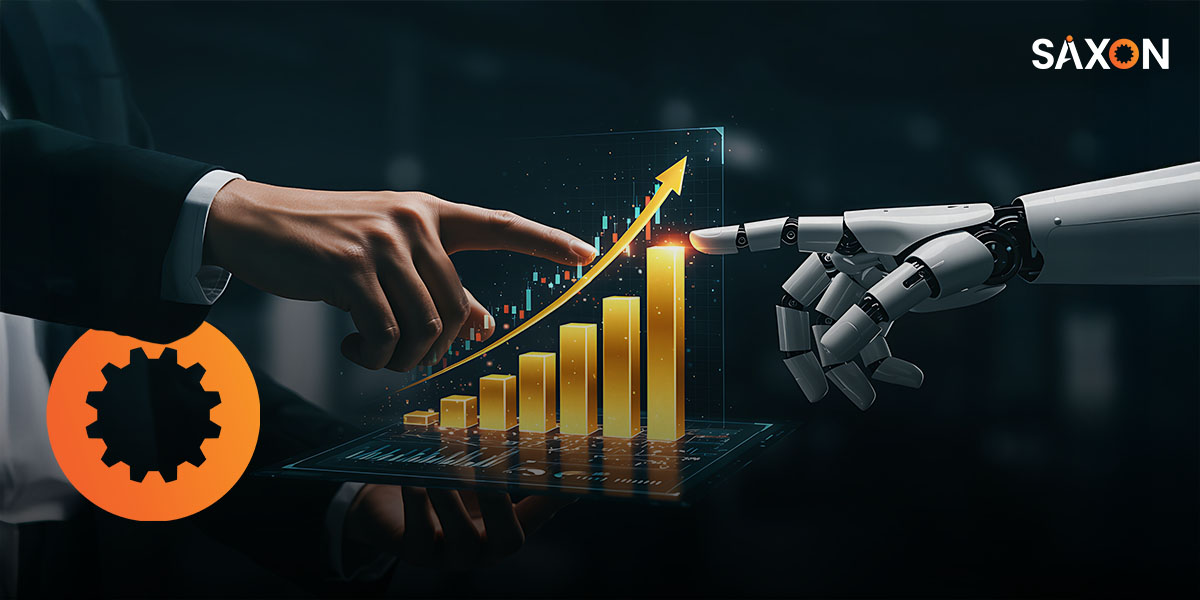Executive Summary
Most enterprises have modernized their sales forecasting with CRM analytics and AI tools—yet forecast accuracy and adaptability remain inconsistent. The reason isn’t a lack of data; it’s a lack of connected, real-time intelligence across the pipeline.
This article explores how forecasting is evolving from static probability models to adaptive pipeline intelligence—a system that senses change, learns continuously, and drives action automatically. This article explains:
- Why traditional forecasting breaks down even in AI-enabled CRMs
- How unified data, machine learning, and agentic AI transform sales forecasting into a live, self-correcting process
- High-impact use cases for agentic AI, including Deal Health Prediction, Margin-Aware Forecasting, Capacity-Aligned Forecasting, and Real-Time Scenario Forecasting
- Key leadership outcomes: 25–30% higher forecast accuracy, lower slippage, and improved profit predictability
Interested ?
Forecasting has always been a core system that decides how organizations plan growth and communicate confidence. Over the past decades, most sales teams have modernized their forecasting with analytics, CRM automation, and even AI-assisted insights. Yet, accuracy and adaptability remain elusive despite advancements.
Market dynamics shift faster than internal systems can respond. Customer behavior changes during mid-cycle. Pricing, supply, and sentiment all move in parallel, and a forecast built last week can feel outdated by the time it reaches the leadership review.
Across industries, sales leaders are asking a deeper question: if forecasting is already data-driven, why does it still struggle to keep pace with reality?
The answer lies not in the technology itself, but in how forecasting is designed, often as a reporting layer, rather than a responsive, connected operating system.
Why Pipeline-Centric Forecasting Breaks Down
Traditional sales pipeline forecasting follows a simple formula=∑(Deal Value × Win Probability) They track what’s been logged in the CRM — not necessarily what’s happening in the field. In fast-changing B2B environments, those assumptions break down quickly.
- CRM data lag: Forecasts reflect updates, not signals. They miss behavioral shifts that occur between reporting cycles.
- Limited variables: Probability × deal size can’t capture pricing elasticity, buyer sentiment, or delivery readiness.
- Data fragmentation: Insights from marketing, finance, and supply systems remain disconnected.
- Static forecasts: Even when AI is used, models often run in isolation, not continuously in sync with new data.
The Shift: From Predictive Accuracy to Adaptive Pipeline Intelligence
Integration of existing systems
Machine Learning for Predictive Context
- Classification models (logistic regression, random forest) evaluate the probability of each deal to move to the next stage.
- Regression models predict cycle duration and revenue at risk.
- Time-series models identify emerging patterns in pipeline inflow, conversion rates, and slippage.
Agentic AI for Pipeline Action
Agentic AI operationalize insights. They alert sales teams when opportunities slow down, guide reps on next-best actions, and flag systemic risks like underperforming regions or margin compression. The result: a forecasting process that shapes pipeline behavior, not just predicts it.
Related Resources
How Agentic AI can strengthen your Sales pipeline strategy
Deal Health Prediction
How it works:
- NLP models process meeting notes and communications for sentiment trends.
- Engagement velocity metrics feed into predictive scoring.
- AI agents flag deals with declining interaction scores for early intervention.
Margin-Aware Pipeline Forecasting
Leaders can model how a 2% discount affects quarterly margins before approving it – aligning sales push with financial discipline.
How it works:
- Regression models simulate pricing elasticity.
- ERP integration injects real-time cost data.
- BI dashboards display margin impact across forecast scenarios.
Capacity-Aligned Pipeline Forecasting
How it works:
- Predictive models correlate order data with supply chain or production metrics.
- AI detects upcoming resource constraints and automatically adjusts forecasted closure windows.
- Operations dashboards highlight capacity utilization impacts on booked vs. achievable revenue.
Real-Time Scenario Forecasting
Leaders can evaluate how such variables influence bookings, margins, or territory coverage, and pivot strategies proactively.
How it works:
- Monte Carlo simulations model probability ranges (P50, P80 outcomes).
- Macroeconomic or regional data streams feed into scenario engines.
- Dynamic dashboards show the revenue and margin impact of each scenario in real time.
A guide on AI-powered Sales Agents
The Strategic Payoff from Agentic AI
- Highly accurate and credible forecasts that builds trust with boards and investors.
- Cross-functional alignment, ensuring sales, finance, and operations all work from one version of the truth.
- Agility to pivot, as leaders can reallocate resources, adjust pricing, or shift go-to-market approaches based on live pipeline insights.
Related Resources
How can Saxon AI help you?
- Data & Analytics Services – Build real-time, governed data pipelines and analytical models that feed live forecasting engines.
- Applied AI & ML Engineering – Develop and deploy predictive and probabilistic models tailored to your business domain.
-
Assistants – Sales AIssist, Fin AIssist, Ops AIssist , etc., execute next-best actions directly within enterprise workflows.
- Integration & Modernization Services – Connect CRMs, ERPs, and data warehouses into a unified forecasting fabric for end-to-end pipeline visibility.
FAQs
What is a sales forecasting horizon?
What is a weighted pipeline forecast?
What is forecast variance analysis?
How do rolling forecasts improve sales forecasting?
Can forecast accuracy really improve with AI?
The Future of Pipeline-Driven Forecasting
Looking ahead, sales forecasting will not be defined by quarterly snapshots but by continuous pipeline intelligence. Agentic automation will enable forecasts that self-correct, pipelines that coach managers on where to focus, and strategy that adapts in real time.
For enterprises, this is more than an efficiency play—it’s an opportunity. By infusing agentic automation into pipeline forecasting, leaders move from explaining misses to confidently guiding outcomes.
In an era of constant uncertainty, the companies that harness agentic AI will not just protect revenue—they’ll shape growth.

